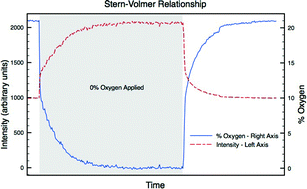Oxygen control with microfluidics
Abstract
Cellular function and behavior are affected by the partial pressure of O2, or oxygen tension, in the microenvironment. The level of oxygenation is important, as it is a balance of oxygen availability and oxygen consumption that is necessary to maintain normoxia. Changes in oxygen tension, from above physiological oxygen tension (hyperoxia) to below physiological levels (hypoxia) or even complete absence of oxygen (anoxia), trigger potent biological responses. For instance, hypoxia has been shown to support the maintenance and promote proliferation of regenerative stem and progenitor cells. Paradoxically, hypoxia also contributes to the development of pathological conditions including systemic inflammatory response, tumorigenesis, and cardiovascular disease, such as ischemic heart disease and pulmonary hypertension. Current methods to study cellular behavior in low levels of oxygen tension include hypoxia workstations and hypoxia chambers. These culture systems do not provide oxygen gradients that are found in vivo or precise control at the microscale. Microfluidic platforms have been developed to overcome the inherent limits of these current methods, including lack of spatial control, slow equilibration, and unachievable or difficult coupling to live-cell microscopy. The various applications made possible by microfluidic systems are the topic of this review. In order to understand how the microscale can be leveraged for oxygen control of cells and tissues within microfluidic systems, some background understanding of diffusion, solubility, and transport at the microscale will be presented in addition to a discussion on the methods for measuring the oxygen tension in microfluidic channels. Finally the various methods for oxygen control within microfluidic platforms will be discussed including devices that rely on diffusion from liquid or gas, utilizing on-or-off-chip mixers, leveraging cellular oxygen uptake to deplete the oxygen, relying on chemical reactions in channels to generate oxygen gradients in a device, and electrolytic reactions to produce oxygen directly on chip.


 Please wait while we load your content...
Please wait while we load your content...